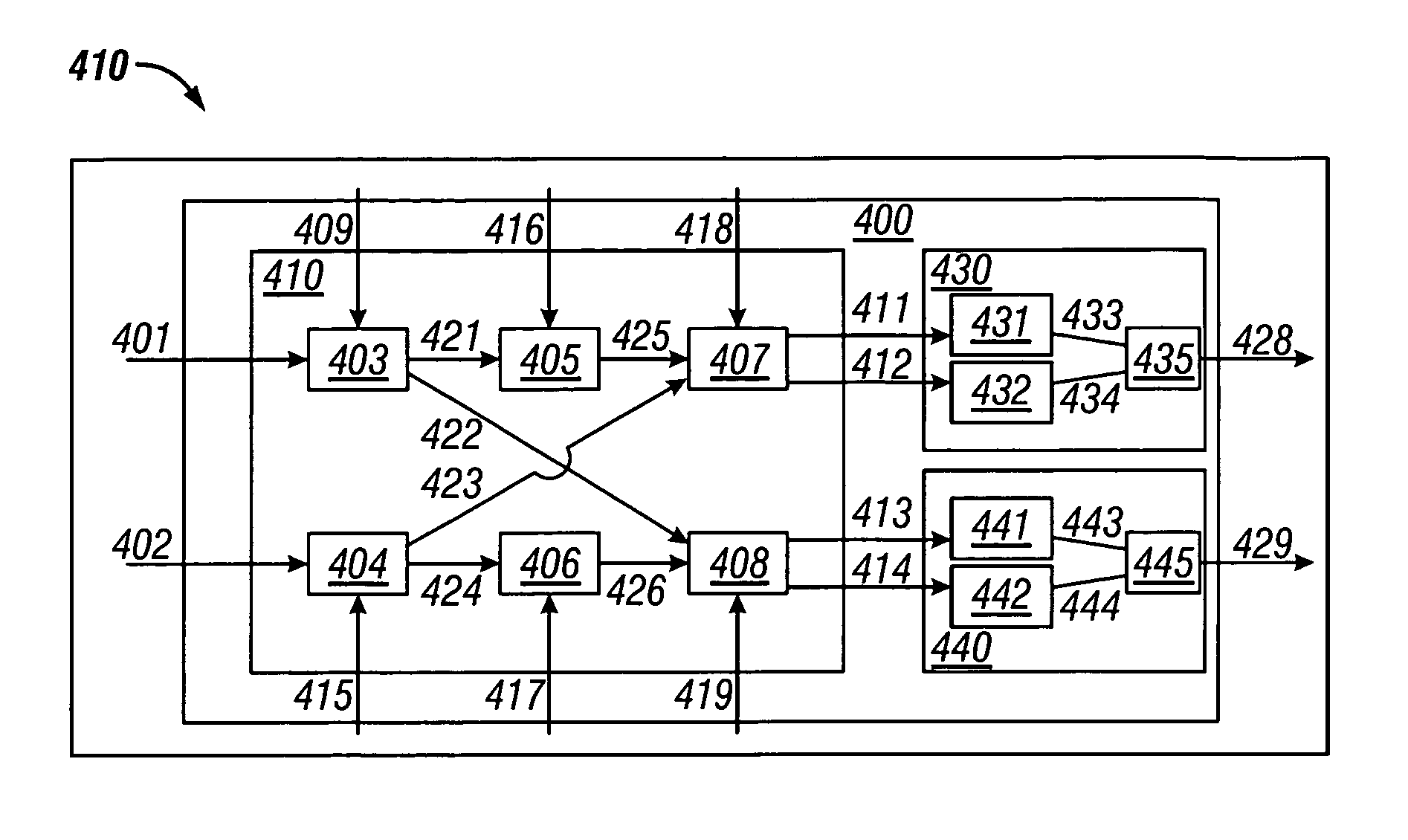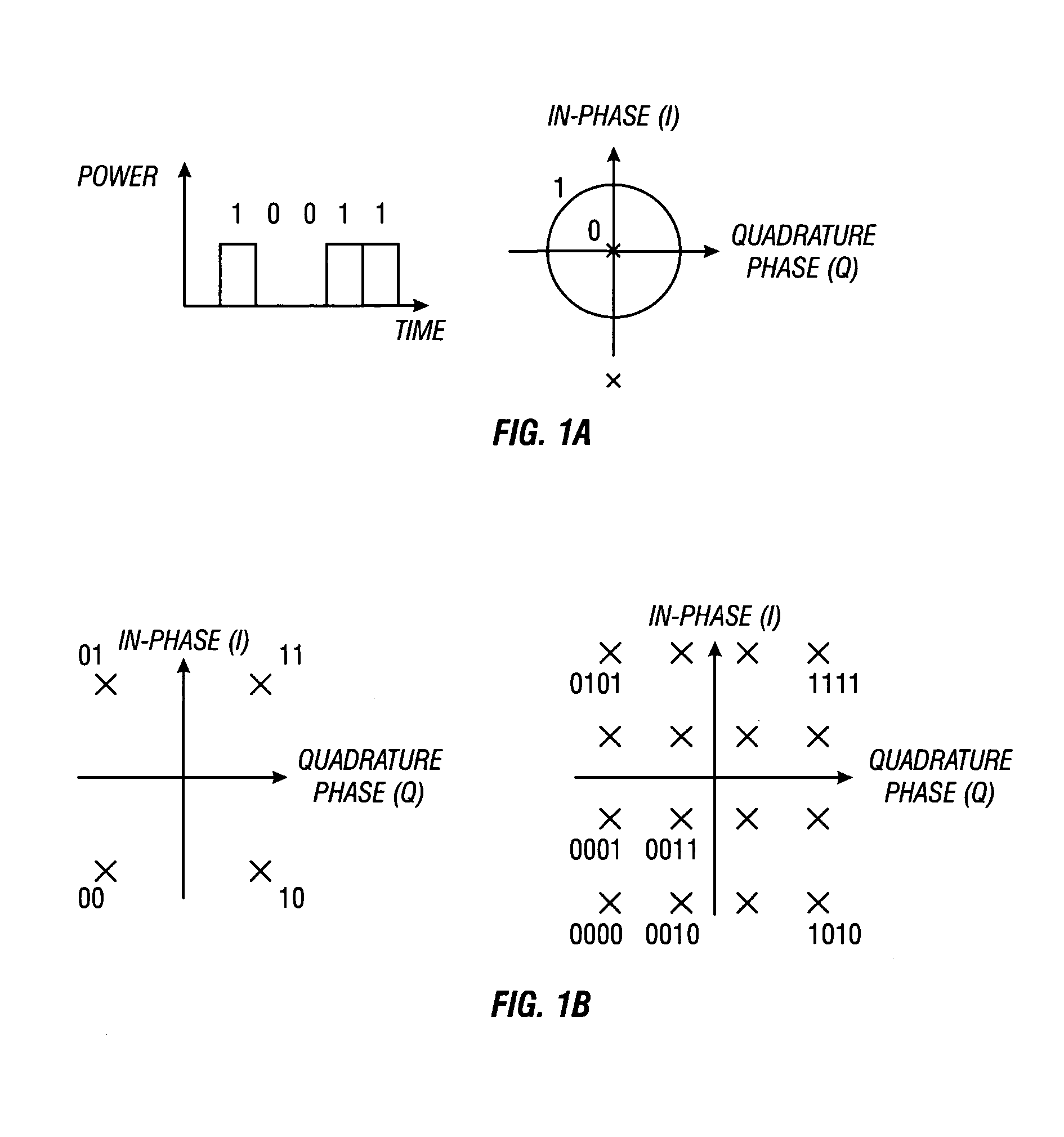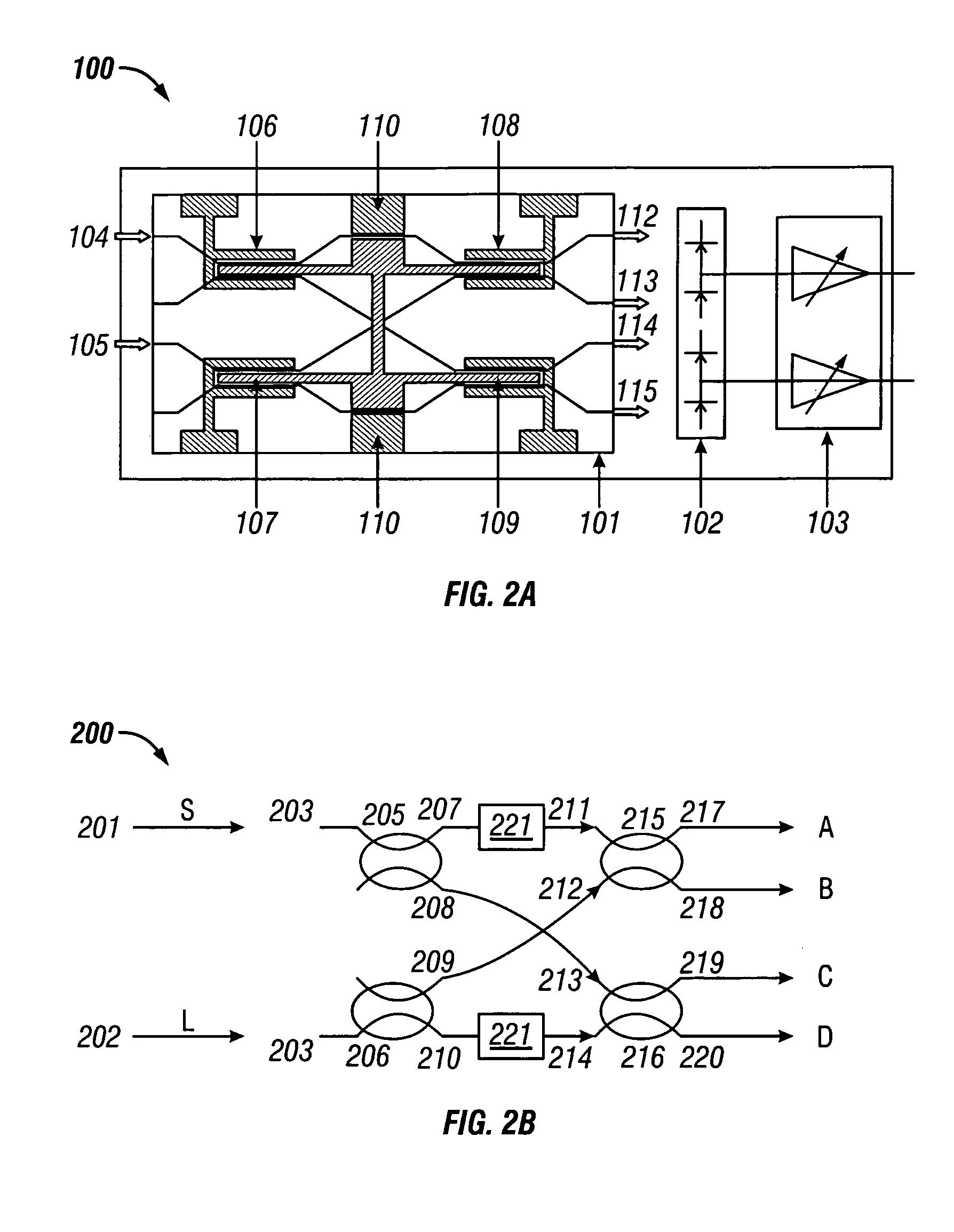Coherent optical detector and coherent communication system and method
a detector and coherent technology, applied in the field of integrated electrooptical receiving devices, can solve the problems of low-cost receivers, inability to implement, and increase the complexity of receivers in coherent detection schemes
- Summary
- Abstract
- Description
- Claims
- Application Information
AI Technical Summary
Benefits of technology
Problems solved by technology
Method used
Image
Examples
Embodiment Construction
[0042]In one embodiment of the present invention, an optical device, such as optical device 200 illustrated in FIG. 2(a), hereafter the “Optical Device”, is provided that includes a first device input, and a second device input, first, second, third and fourth couplers (mixers) and first, second, third and fourth device outputs. Each coupler includes two adjacent waveguides providing the mixing of the optical signals propagating in these adjacent waveguides. The first and second device inputs both are connected, respectively, to the first coupler and the second coupler.
[0043]One output of the first coupler is connected to one input of the third coupler while another output of the first coupler is connected to the one input of the fourth coupler. An output of the second coupler is connected to another input of the fourth coupler while another output of the first coupler is connected to another input of the third coupler. The Optical Device further includes two crossing waveguides, wh...
PUM
| Property | Measurement | Unit |
|---|---|---|
| spacing | aaaaa | aaaaa |
| spacing | aaaaa | aaaaa |
| frequency | aaaaa | aaaaa |
Abstract
Description
Claims
Application Information
 Login to View More
Login to View More - R&D
- Intellectual Property
- Life Sciences
- Materials
- Tech Scout
- Unparalleled Data Quality
- Higher Quality Content
- 60% Fewer Hallucinations
Browse by: Latest US Patents, China's latest patents, Technical Efficacy Thesaurus, Application Domain, Technology Topic, Popular Technical Reports.
© 2025 PatSnap. All rights reserved.Legal|Privacy policy|Modern Slavery Act Transparency Statement|Sitemap|About US| Contact US: help@patsnap.com



